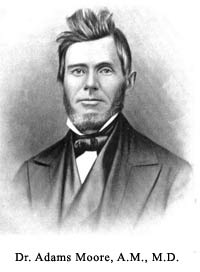
Prior to the founding of Littleton, NH in 1784, there were no physicians residing in the area. According to the Gazetteer of Grafton County, Dr. White, a physician from Newbury, VT, rode into town on horseback two or three times each year to treat patients by bleeding and blistering, the vogue back in the day. During the late 18th and early 19th centuries, a number of physicians came to town, with medical educations ranging from tutelages from relatives or physicians in practice, to Ivy League medical school educations. Dr. Adams Moore stood out among these early physicians. He had a reputation as a true scholar not only in medicine, but in the fields of science, literature, politics, and current events. It was common knowledge that Dr. Moore knew more about his adopted town of Littleton than any other person; during the last years of his life, he devoted himself to preparing a history of the town. There were other physicians who had practiced in Littleton who were known well beyond the limits of the North Country of New Hampshire.
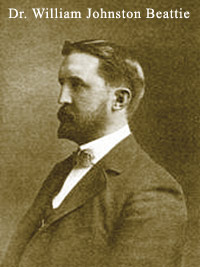
Dr. William Johnston Beattie arrived in Littleton in 1889. Beattie graduated from Bellevue Medical College in New York City in 1888, and spent the following year gaining practical experience as a surgeon at Bellevue Hospital. As the town of Littleton had a long standing reputation for having high quality professional men in the areas of medicine, law, and religion, Dr. Beattie had the self-confidence to stand tall beside these professionals. Although not obvious at the time, Dr. Beattie’s decision to practice medicine in Littleton, NH would profoundly impact healthcare in the Littleton area.
The first trained nurse in the Littleton area was Charity Elliott, who was born in October of 1869 in Jemseg in the province of New Brunswick, Canada. She was the ninth nurse to graduate from the Mary Hitchcock Memorial Hospital School of Nursing in Hanover, NH in 1898. Upon graduation, she worked with Dr. William Beattie for five years.
Sources:
Child, Hamilton. Gazetteer of Grafton County, 1709-1886. pps. 476-481.
Littleton Courier
Littleton Hospital archives
Photo and calling card of Charity Dykeman Elliott courtesy of John Bigelow and family
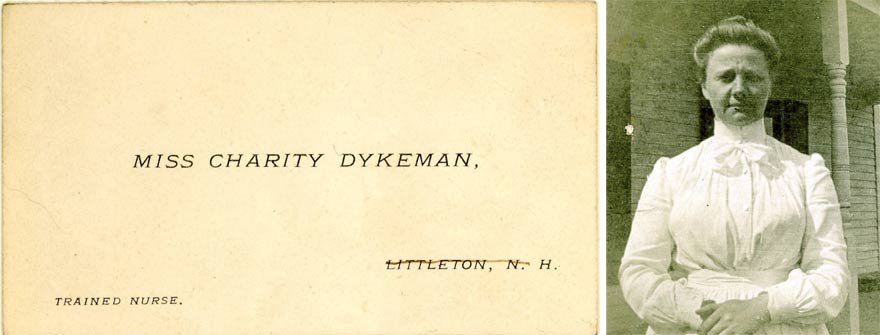
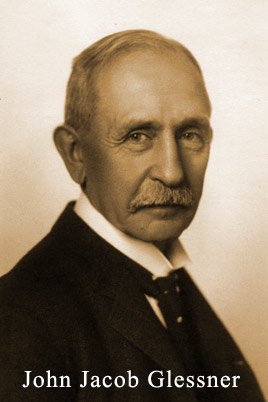
According to Mrs. Frances Glessner Lee, daughter of the Chicago industrialist and summer resident of Bethlehem, Mr. John Jacob Glessner “a medical emergency at our West Farm home made my parents strong advocates for a community hospital”. She recalled that Dr. William J. Beattie had to perform an emergency appendectomy for the Glessner family’s chauffeur on the family’s kitchen table at West Farm. After that experience, Dr. Beattie and Mr. Glessner formed the Littleton Hospital Association with the goal of establishing a community hospital in Littleton, NH.
On April 3, 1906, sixty-two “incorporators” gathered at Thayer’s Hotel to found the Littleton Hospital Association. Although the town had several practicing physicians at the time, there was no organized hospital in the area until this time. Dr. Beattie became President of the Board of Trustees and Mr. Glessner became a major contributor to the fund drive for construction of a new building. Mrs. William J. Beattie became the first President of the Women’s Auxiliary Board formed in December of 1906 to aid in the domestic management of the hospital. Both Mr. John J. Glessner and Mr. John J.G.M. Glessner, father and son, were important to the early history of Littleton Hospital. J.J. Glessner donated $10,000 to start the Littleton Hospital Association. J.G.M. Glessner, who became a permanent resident of Bethlehem in 1906, served as president of the Hospital Association. An eyewitness at the dedication of the Littleton Hospital on June 28, 1907 reported that “The beds were so neat, the accoutrements so perfect that one could half wish themselves sick in order to avail themselves of the chance to be sent to this Hotel Dieu.”. When Littleton Hospital opened, it had a bed capacity of 15 and one operating room.
Sources:
White Mountain Journal, Friday, June 28, 1907, p. 43.
Littleton Hospital archives
Photo of John Jacob Glessner used with permission from the Glessner House Museum
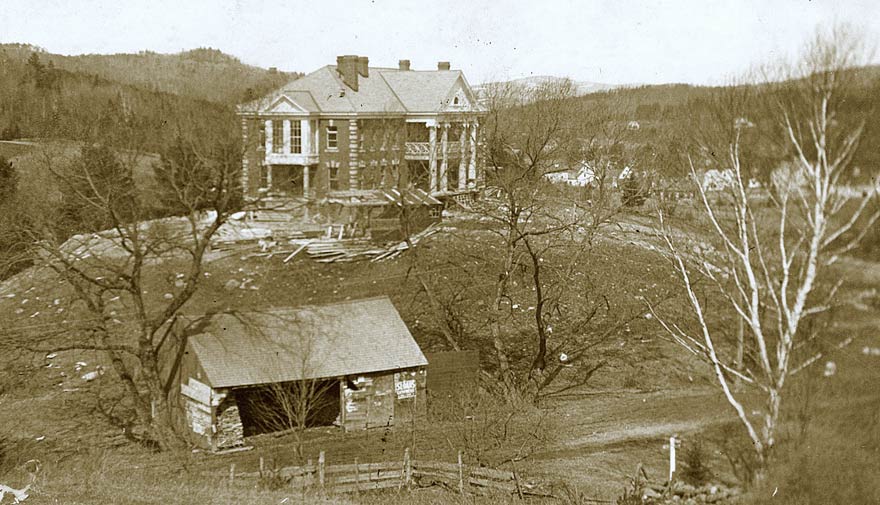
In 1910, Littleton Hospital began a training program for nurses under the tutelage of Dr. William Beattie. The three-year program met the requirements of the State Board of Registration for Nurses. The curriculum for the three-year program included health, order and cleanliness, theory of nursing, hygiene, anatomy and physiology, dietetics, bandaging, ethics, diseases of the nervous system, materia medica (study of remedies), diseases of the eye, ear, nose and throat, contagious diseases, children’s disease, obstetrics, bacteriology, diseases of the skin, urinalysis and massage.
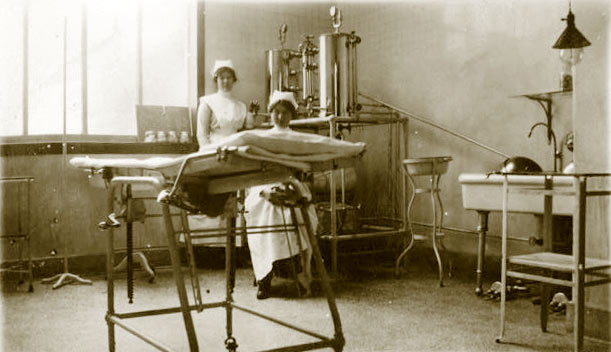
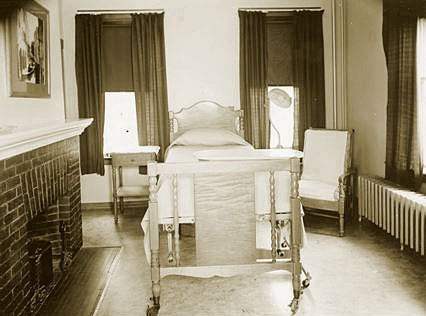

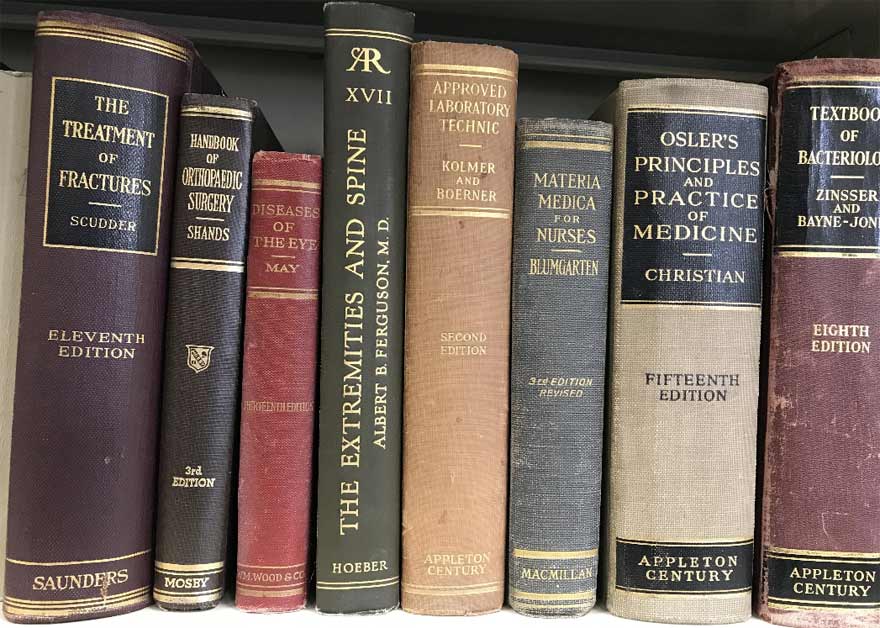
In 1922, Mr. and Mrs. Alvin Ivie of New York City and Bethlehem, New Hampshire, donated Littleton Hospital’s first motor ambulance. It replaced a horse-drawn vehicle. The rates for ambulance calls were set at $3.00 for calls within Littleton Village District and 20 cents per mile, with a minimum charge of $5.00 for calls outside Littleton Village District.
In 1923, the Littleton Hospital Training School for Nurses opened in the new Remich Home for Nurses, adjacent to the Hospital. This training school provided a supply of trained nurses for the Hospital and as a community resource for education and training of area women. The Littleton Hospital Training School for Nurses provided professional training to nearly 200 women and graduated over 60 registered nurses before closing in 1935.

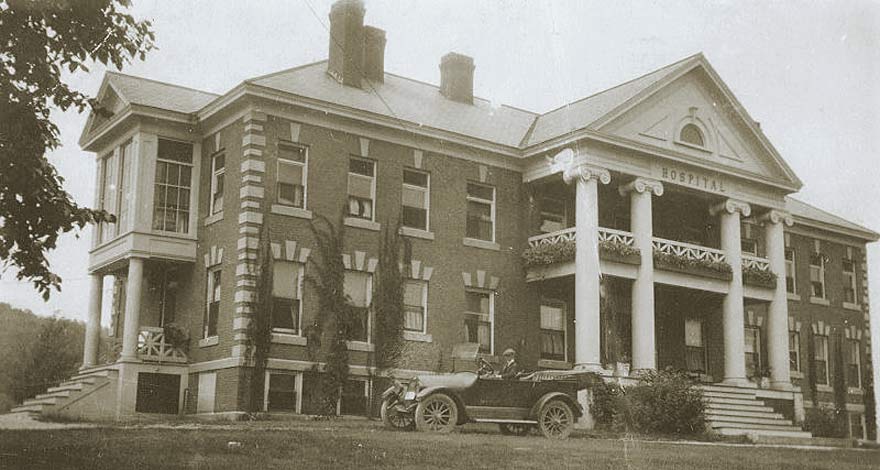
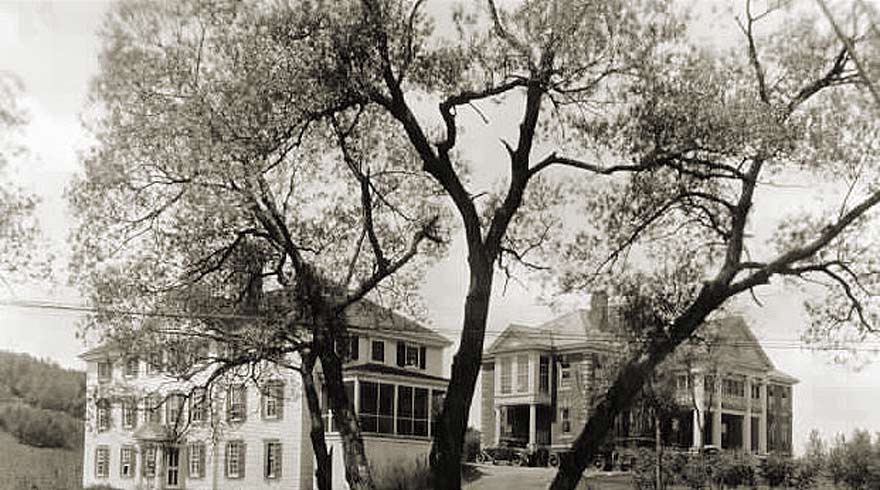
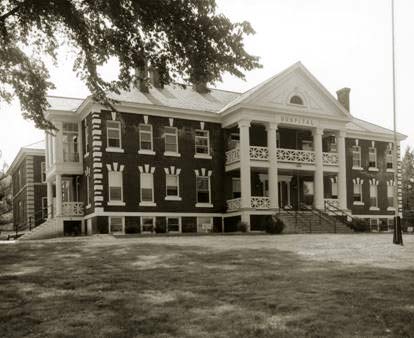
The Littleton Hospital Association undertook its first major construction program in 1932 as the area population grew. A three-story wing boosted capacity to 47 beds and added a maternity ward, operating room, laboratory and kitchen. This addition contained an elevator for the convenience of patients. In the fall of 1935, Littleton Hospital discontinued its Training School for Nurses indefinitely due to the Depression. The administration closed the Remich Home to save fuel costs, and they placed students in session at other schools of nursing to complete their training.
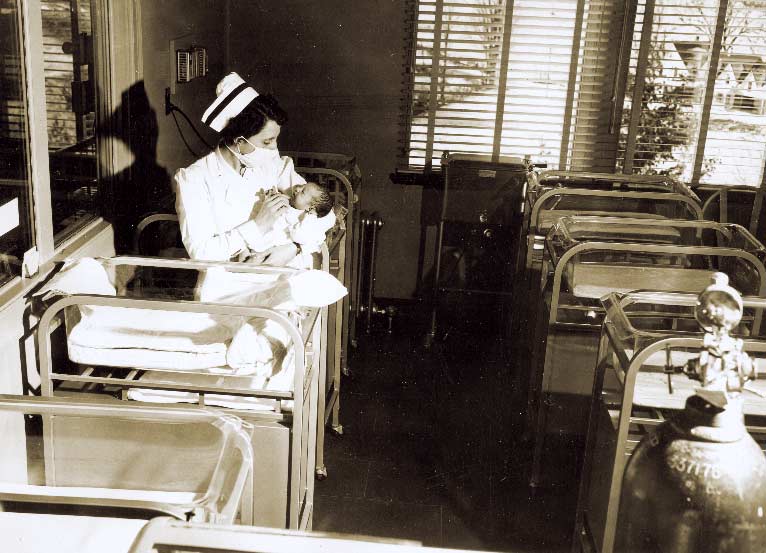
The 1940s

In 1941, Bette Davis, who owned a home in the area, made a personal appearance in Littleton at the premiere of her picture, “The Great Lie”, at the local movie theater. Half of the proceeds benefited Littleton Hospital.
During the war the Hospital was renovated and by 1946 all patient rooms and service areas had been refinished. That same year a record 205 births in the post-war baby boom forced the nursery to run over capacity. Superintendent Emma Bass was quoted in the Littleton Courier advocating a new nursery because, “Our present nursery was built to care for eight babies; we now frequently have from 12-15 at a time, in bureau drawers and boxes, on radiators, sinks and tables.” The Hospital Board of Trustees (BOT) hired a full time business manager in 1949, which shifted work done by the BOT and Superintendent of Nurses onto the business manager. The Trustees appointed Mr. Norman P. Schauer to this position. Assuming increasing responsibility over the years, this position transformed into that of hospital administrator.
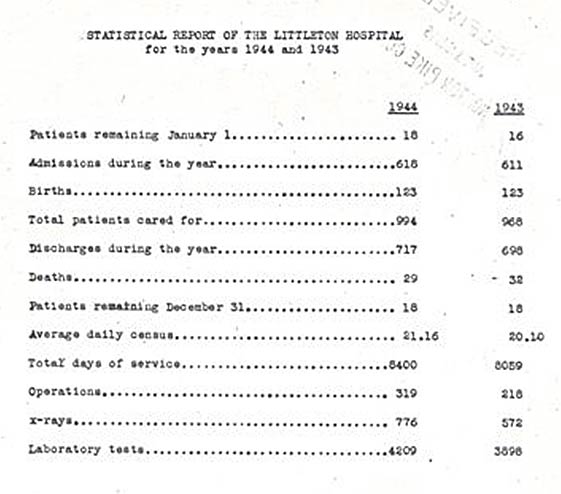
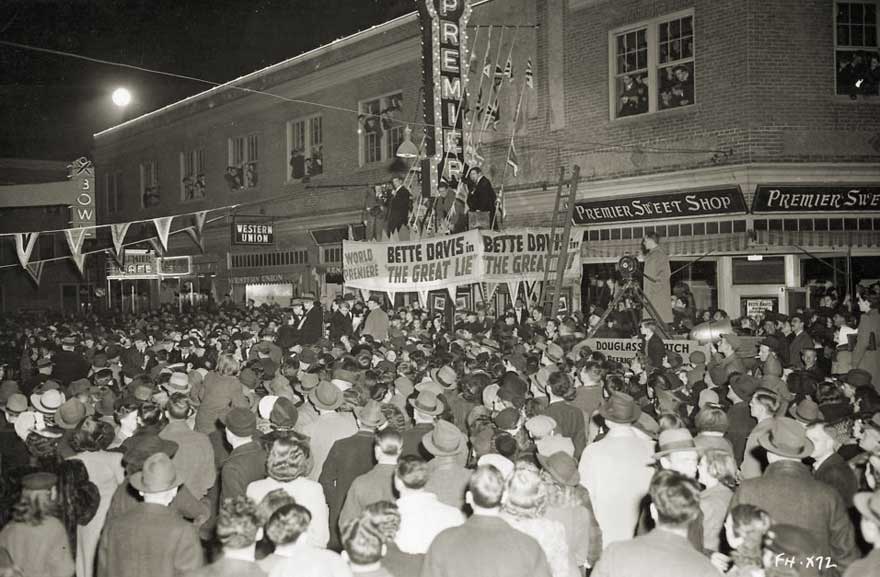
This was a decade of sweeping change at the Federal level, as our Government amended the Federal Social Securities Act. These amendments allowed non-profit hospitals to offer employees Social Security benefits previously only available to those in the for-profit sector. The American Hospital Association (AHA) supported this Act, as it allowed better working conditions in the non-profit hospital. This period was also a tumultuous time due to the Korean Conflict in the early 1950s. This resulted in nursing and doctor shortages, as there were calls to the military.
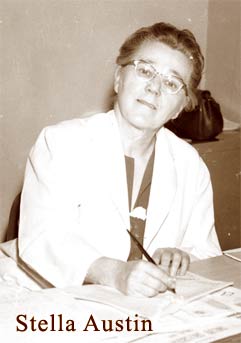
Littleton Hospital hired Miss Stella Austin in 1951 to succeed Emma Bass as Superintendent. This extremely competent nurse and administrator worked with the Hospital Board of Directors to develop and implement the Hospital’s first administrative and personnel policies. At this time, the Hospital hired an “administrator” and “supervisor of nurses”, resulting in clearly defining the functions of these positions.
1956 marked Littleton Hospital Association’s Golden Jubilee: 1906-1956- A Half Century of Healing.
On October 31, 1957, the Littleton Courier front page piece featured Littleton Hospital’s modernized X-ray Department. According to Dr. William Robinson, the hospital’s radiologist at the time, the new pieces of equipment added comfort and speed to ill or injured patients, and upgraded the equipment to a level of that used in large city hospitals. These enhancements were all part of the hospital’s program to provide residents and visitors to the North Country the finest and most up-to-date facilities when they needed the services of Littleton Hospital.
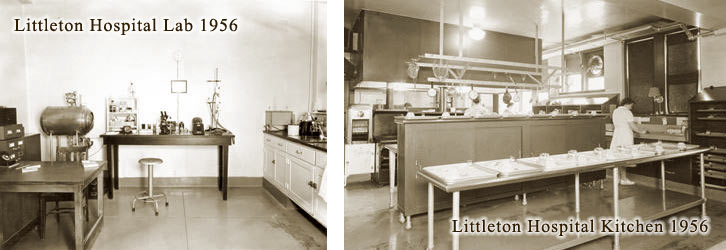
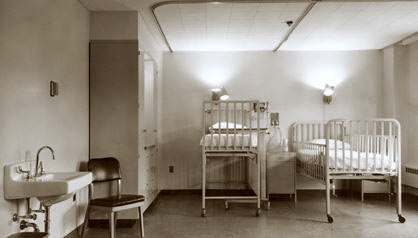
In 1962, a three-story addition added twenty beds to the hospital’s capacity for a total of 61 beds. The extensive project modernized the obstetrics department, added a physical therapy department, and provided new operating rooms, laboratory, and laundry and utilities areas in the basement of the new wing. The Littleton Hospital Trustees voted in favor of covering Major Medical Insurance for all employees working in excess of 30 hours per week at a cost of about 75 cents per employee.
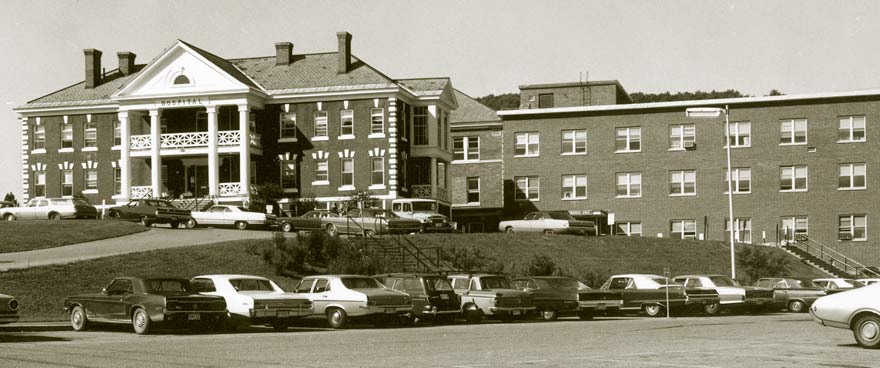
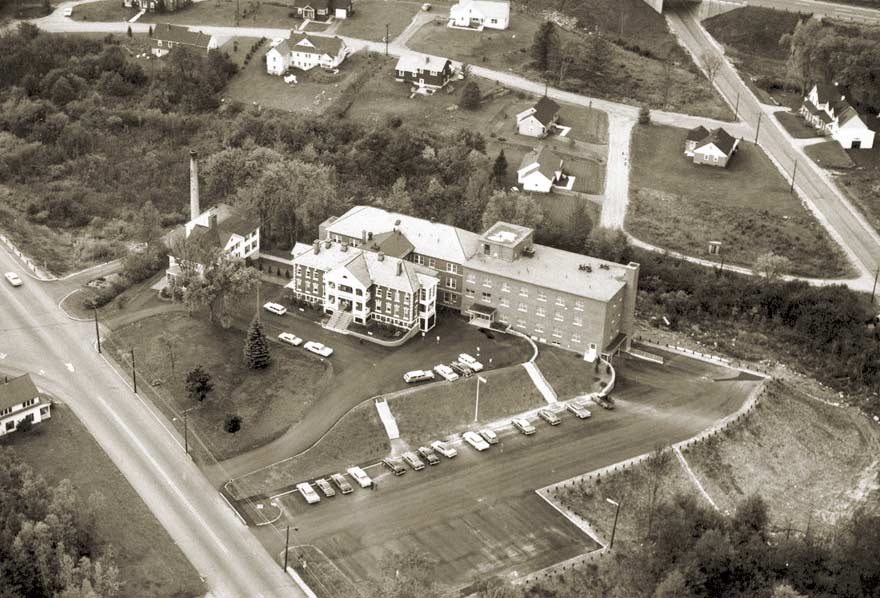
In 1974-1975, a new wing expanded the radiology department and the pharmacy, and provided a fully-equipped emergency department and physicians’ office space. According to well-known Littleton resident, businessman, and Littleton Hospital Trustee, Paul J. McGoldrick, one of the architectural drawings called for elimination of the large fir tree planted in 1958 when the front of the hospital was landscaped. Particularly at Christmas time, many enjoyed the tree, as it was beautifully lit. Paul informed the architect that no proposal could be presented to the Board of Trustees, the Hospital community, or to the service area that eliminated the tree. The fir tree stood for many years, as the contractors took special care to protect its root structure.
The 1970s was a period of tremendous growth in clinical services. The arrival of radiologist, Dale Childs, MD, and pathologist Ramesh Dave, MD, greatly expanded the diagnostic capabilities at Littleton Hospital. Littleton implemented mammography in 1976. During this time, the Hospital also expanded in the areas of general and orthopaedic surgery. Littleton Hospital was now well-positioned to be leaders in healthcare throughout New Hampshire’s North Country.
In September of 1975, general surgeon, Dr. Howard Pritham, founded the Littleton Hospital Tumor Clinic. He donated his services and time to coordinate a program funded by the National Institutes of Health (NIH) through the Mary Hitchcock Memorial Hospital in Hanover, NH. The Tumor Clinic was described as “a registry of former carcinoma patients, will offer follow-up care, a core of physicians from multi-specialty areas, and a community service.”
One of the signs of growth was an increase in visits to Littleton Hospital’s Emergency Room. Originally staffed by Emergency Medical Technicians (EMTs) on limited days and hours, area physicians began call rotations. Soon, the physicians were overwhelmed, with busy clinical practices, and visiting patients both in the inpatient hospital setting and at home. Before long, the hospital began staffing its Emergency Room round the clock to better serve the residents of Littleton and the surrounding communities as well as the seasonal residents and visitors to the area.
Source
Littleton Hospital archives
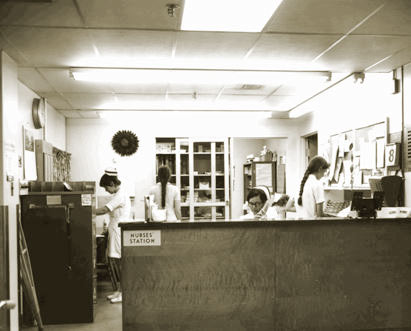
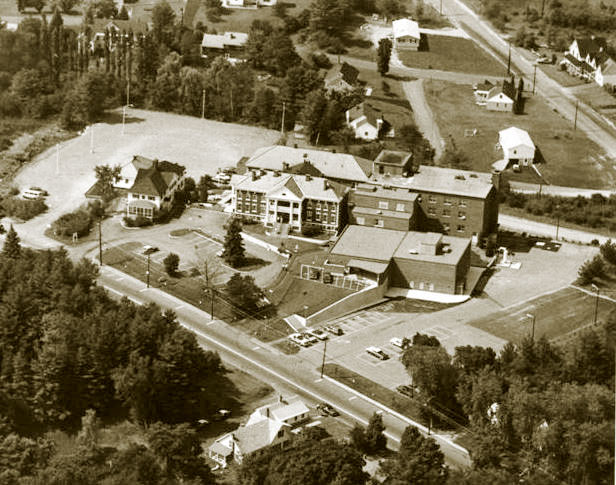
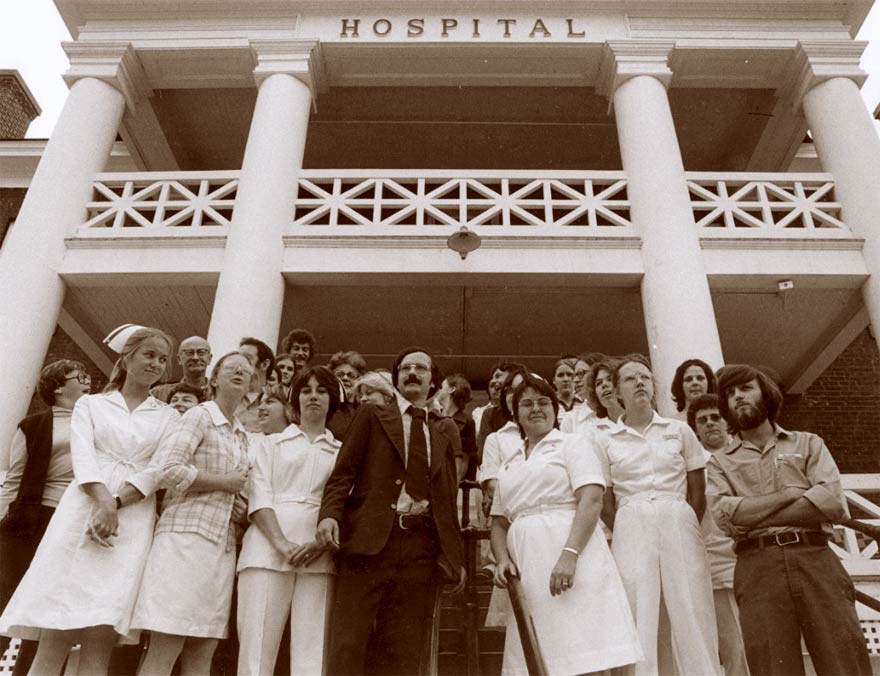
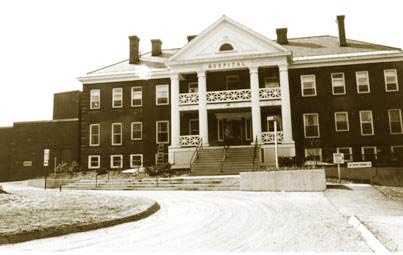
Renovations in 1980 provided a new cardiac laboratory, a new pediatric patient room, renovated obstetric and intensive care units, and other modernizations. To keep pace with larger hospitals, Littleton began using the services of a mobile CT scanner which travels to hospitals in New Hampshire on behalf of Hitchcock’s Regional Health Services.
External pressures in the 80’s exerted an influence on the hospital, with reductions in federal health services funding and the arrival of new payment schedules referred to as Diagnosis-Related Groups (DRGs). The Hospital expanded its outpatient services, reflecting regulatory efforts to curtail national health care expenditures. By the early 1980s, it became clear that full-time coverage by emergency physicians was needed to staff the growing department. Twenty-four-hour, on-site physician coverage has been the standard since that time.
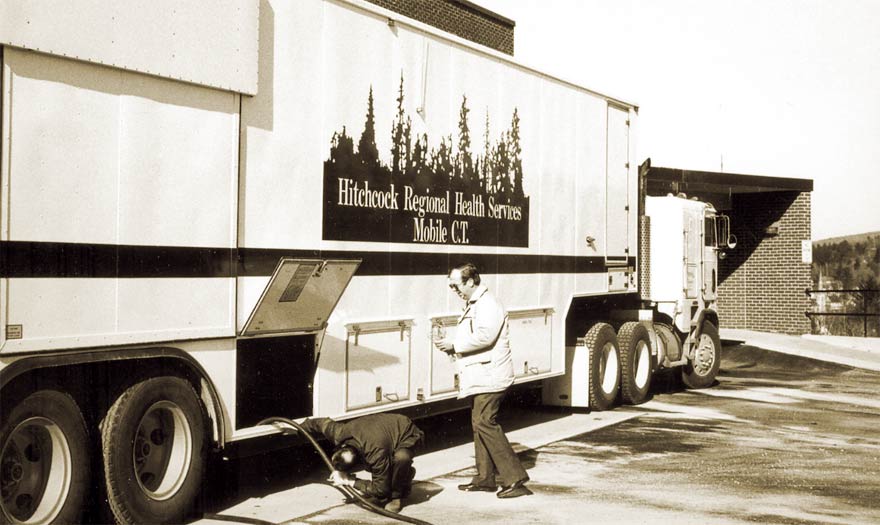
In 1990, Littleton Hospital started the new decade with a new name, Littleton Regional Hospital, reflecting its wider service area. By the mid-90s, Littleton Regional Hospital had become a progressive medical facility offering multiple specialties, including neurology, cardiology, orthopaedics, ophthalmology, pediatrics, obstetrics/gynecology, oncology and general surgery. LRH now offered an on-site CT scanner and mobile MRI unit.
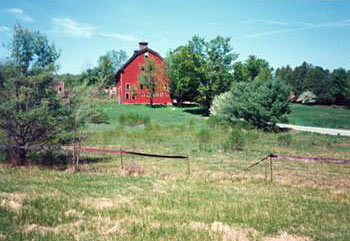
By 1998, Hospital trustees determined a new replacement facility was necessary. Projected maintenance and renovation costs for the aging hospital and the fact that the old building was virtually landlocked made a new building necessary.
On October 19, 1998, ground breaking for the new campus took place on property in North Littleton. The 250 +/- acres that now comprise the Littleton Regional Hospital campus were originally known as the Hilltop Farm that was built about 1824. There were several owners. In 1896, then owner Henry Blodgett deeded the farm to Mr. Washington Irving Lincoln Adams. Mr. Adams and his family were friends of the Kilburn and Remich families of Littleton. Mr. Adams was a direct descendant of the Presidential Adamses of Boston, MA. The Adamses lived and worked in Montclair, New Jersey, where Mr. Adams owned and/or operated various printing, stationer and lithography businesses. The Adams family summered at the farm each year with their five children. They also purchased the adjacent Knoll Farm at some point. The farmhouse, located on the north side of Hilltop Road, was remodeled and added onto several times. 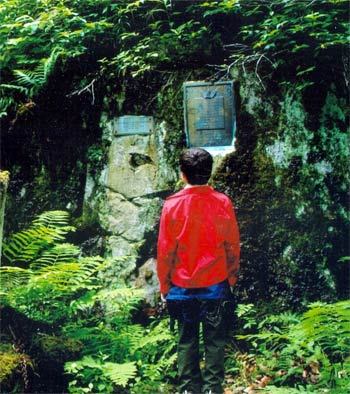
A small walking path and a stone and ledge grotto created by the Adamses were discovered on current hospital property. This commemorates one of the Adams’ five children, Carolyn Styles, who lived for just 14 years. She was an incredibly special child who loved life and enjoyed the natural surroundings of Hilltop Farm. The hospital reverently maintains this memorial.
The Hans Hoffman family purchased the farmhouse and land, including a barn, sometime in 1945 or 1946. Mr. Hoffman was a co-owner of Connors and Hoffman, Inc., Shoe Company that was located on Redington Street in Littleton as well as other shoe factories in Hot Springs, Mount Ida, and Wynn, Arkansas. Prior to Mr. Hoffman’s untimely death in 1977 at the age of 67, he and his wife Noemi had decided to will the 250-acre farm and buildings on Hilltop Road and adjacent land on St. Johnsbury Road and Slate Ledge Road to Littleton Regional Hospital after they both died.
Sometime after Mr. Hoffman’s death, Noemi married Chitresh (Teddy) Khedker, a prince from India. They also used the farm as a summer residence. Their primary residence was at 520 Park Avenue in New York City where Mr. and Mrs. Hoffman had also resided in the winter. In 1997, the Khedkers both died under tragic circumstances and the Littleton property, through the will, reverted to Littleton Regional Hospital. In 1999, construction began on the new Littleton Regional Hospital located at 600 St. Johnsbury Road. The first structure to be removed was the barn that was of post and beam construction and had historical significance. Littleton Regional Hospital paid $12,000 to have the barn dismantled with the hopes of reconstructing it. However, much of the structure was not salvageable. The structural beams and other salvageable members became the property of the company that dismantled the barn.
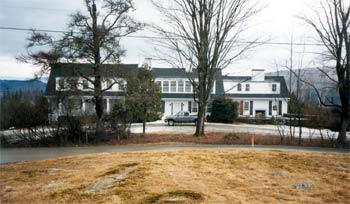
The “Hoffman House,” so called, was used to house the hospital billing and Information Technology (IT) office for a time. It soon became apparent that the house was not structurally sound and making necessary repairs was cost prohibitive. A decision was made to demolish the house to make room for a future Medical Office Building and/or parking lot for employees. Prior to demolition, Littleton Regional Hospital did its due diligence and research and determined that the house did not have any historical significance.
Sources
Colby, Jack, ed. Littleton: Crossroads of Northern New Hampshire, Town of Littleton, 1984.
Adams, W.I., editor. Carolyn: a completed life. Memorial of Carolyn Styles Adams, 1910.
Littleton Hospital archives
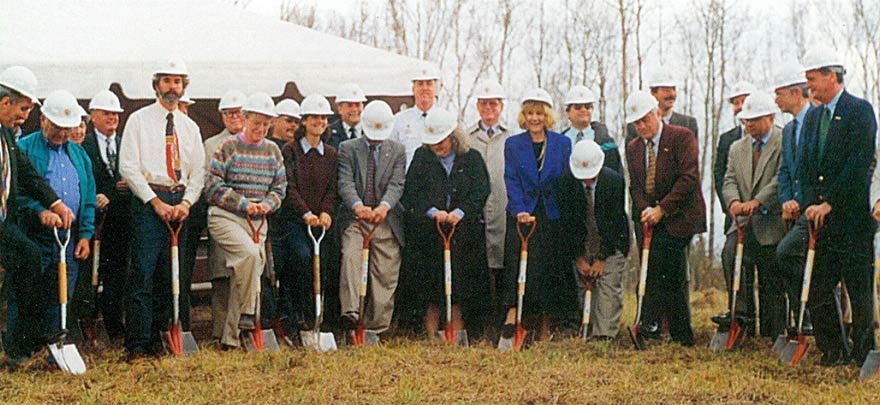
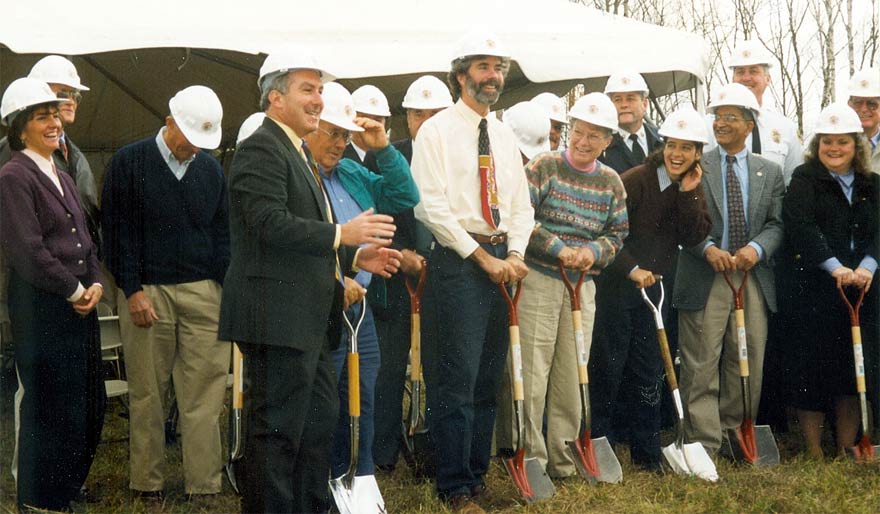
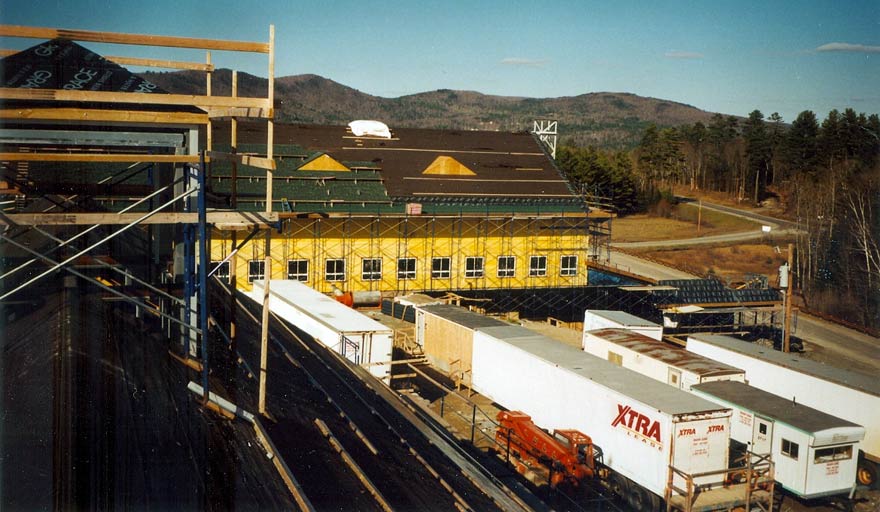
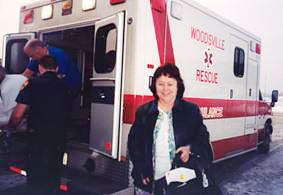
The new Littleton Regional Hospital was dedicated on January 8, 2001. At this time, a Veteran’s Administration Community-Based Outpatient Clinic (CBOC) began seeing patients at facilities located in the medical office building at the new location on Saint Johnsbury Road. The new 88,000-square-foot hospital and its adjoining 25,000-square-foot medical office building opened on January 23, 2001. Littleton Hospital implemented a successful Paramedic Program this year, as well. The program’s purpose was to improve patient flow and reduce wait times. On October 18, 2002, the Physicians’ Office Building and Conference Center was dedicated in memory of Dr. H. Taylor Caswell, Jr., a long-time physician, trustee, and beloved friend of the Littleton Regional Hospital.
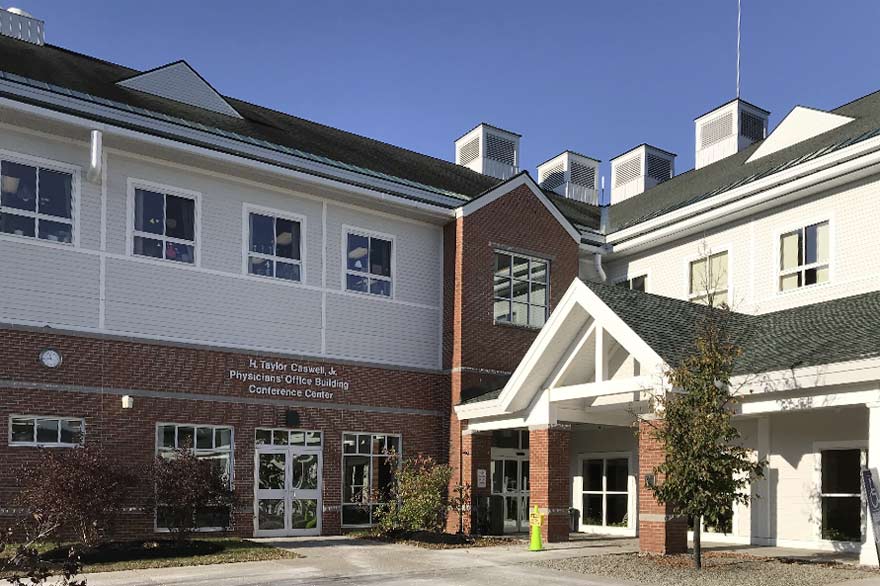
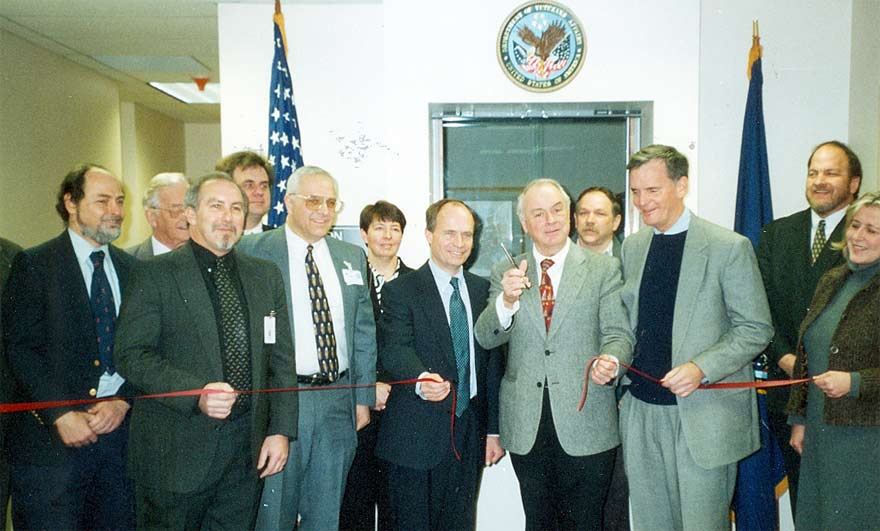
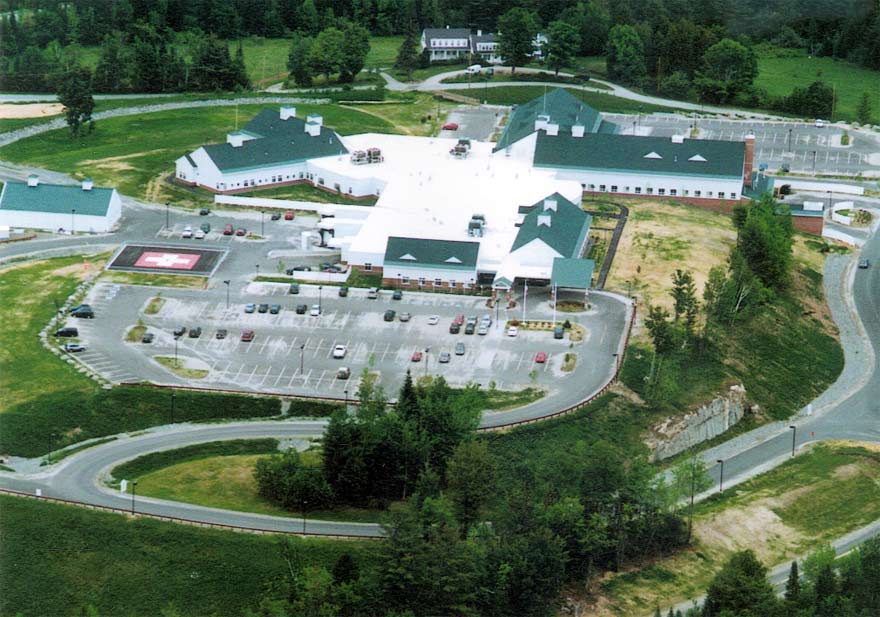
In 2010, LRH added a new 63,000 square foot medical office building with an unfinished upper level (for future growth) to house additional physician practices. In 2012, LRH expanded its surgical suite to increase the number of operating rooms to four, and greatly increase the number of prep and recovery areas. Also, Diagnostic Imaging added a new fixed Magnetic Resonance Imaging machine (MRI) this year. LRH turned the switch on to its new Biomass Plant on January 1, 2014. In just one year, LRH saved close to $400,000 in fuel with the conversion of heating with wood chips processed at the biomass plant.
Over time, primary care physician and specialist offices filled the space in the medical office building suites. In 2016, LRH completed the upper level of the medical office building to house North Country Women’s Health, General Surgery, and Alpine Clinic. The newly renovated Sauter Birthing Suite, a state of the art family-centered birthing unit, opened its doors to residents of Northern New Hampshire and Vermont in 2016, as well.
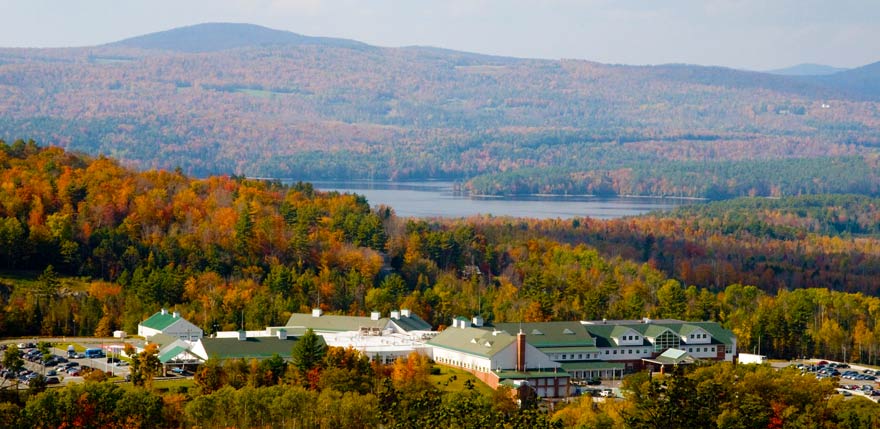
In 2010, LRH added a new 63,000 square foot medical office building with an unfinished upper level (for future growth) to house additional physician practices. In 2012, LRH expanded its surgical suite to increase the number of operating rooms to four, and greatly increase the number of prep and recovery areas. Also, Diagnostic Imaging added a new fixed Magnetic Resonance Imaging machine (MRI) this year. LRH turned the switch on to its new Biomass Plant on January 1, 2014. In just one year, LRH saved close to $400,000 in fuel with the conversion of heating with wood chips processed at the biomass plant.
Over time, primary care physician and specialist offices filled the space in the medical office building suites. In 2016, LRH completed the upper level of the medical office building to house North Country Women’s Health, General Surgery, and Alpine Clinic. The newly renovated Sauter Birthing Suite, a state of the art family-centered birthing unit, opened its doors to residents of Northern New Hampshire and Vermont in 2016, as well.

Today, the former Littleton Hospital on Cottage Street is a professional office building with a number of tenants and also an affordable senior housing complex known as the Beattie House. The Mt. Eustis Commons office building and the Beattie House, an affordable housing complex for senior citizens, share the site now.
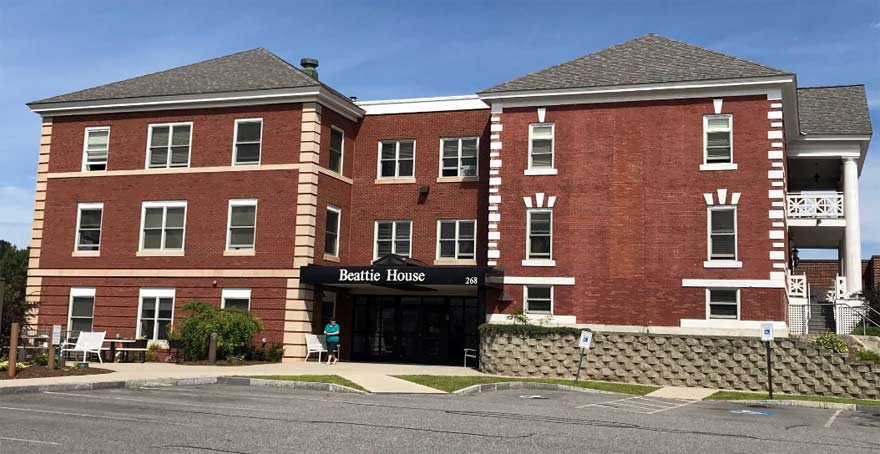
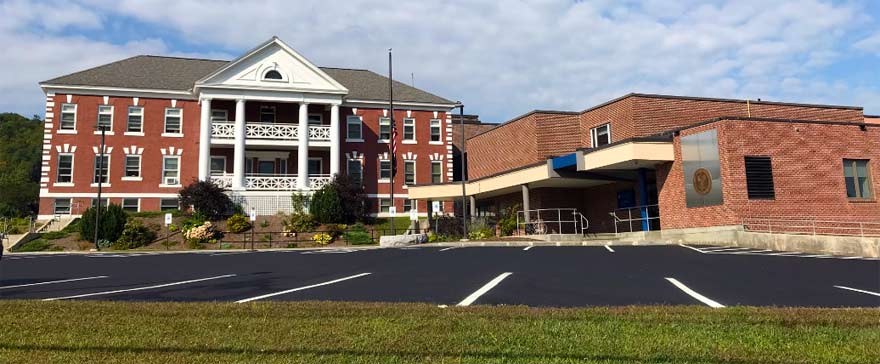
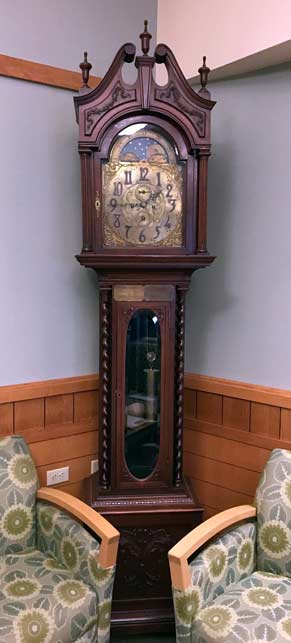
The stately grandfather’s clock that is located in the main lobby at Littleton Regional Hospital was presented to the Hospital in the year 1913. However, this clock was constructed some time during the 19th century.
The two brass plaques affixed to the front of the clock state that the Littleton Drama Club donated the clock to the Cohashauke Club in 1898, and that the Cohashauke Club gave the clock to Littleton Regional Hospital in 1913.
The Cohashauke Club was a social order in Littleton, NH, that formed in 1892 and incorporated in 1897. The idea for this club came about as a result of a few young men who desired a place where they could meet their friends and find recreation. Originally located in a few rooms in the Littleton Opera Block, the club relocated to more spacious quarters in February of 1897 to Parker’s Block on Main Street, Littleton. In its prime, the club had about ninety active and nearly 30 associate members.
Source:
Picturesque and Progressive Littleton and the White Mountains, 2nd reprinting of 1968 edition (1998)
Incorporators - Presidents - Directors

- William J. Beattie Littleton, NH
- Oscar C. Hatch Littleton, NH
- Lucia E. Bellows Littleton, NH
- A.S. Batchellor Littleton, NH
- William H. Mitchell Littleton, NH
- Charles F. Eastman Littleton, NH
- James H. Bailey Littleton, NH
- Elizabeth K. Remich Littleton, NH
- Andrew W. Bingham Littleton, NH
- H.M. Morse Littleton, NH
- Myra G. Eaton Littleton, NH
- I.C. Richardson Littleton, NH
- J.M. Tillotson Littleton, NH
- F.G. Chutter Littleton, NH
- C.F. Davis Littleton, NH
- Elizabeth Kerr Franconia, NH
- M.F. Young Littleton, NH
- E.H. Gould Littleton, NH
- John Pierce, Jr. Bethlehem, NH
- George T. Cruft Maplewood, NH
- Thomas Trudeau Pierce Bridge, NH
- F.H. English Littleton, NH
- C.F. Nutting Littleton, NH
- Edgar Aldrich Littleton, NH
- Henry F. Green Littleton, NH
- John F. Tilton Littleton, NH
- George R. Edson Littleton, NH
- Mary E. Heald Littleton, NH
- Addie Steere Littleton, NH
- Mrs. Edward B. Lynch Littleton, NH
- G.L. Johnson Littleton, NH
- James C. Rowell Littleton, NH
- Louis H. Parlin Littleton, NH
- George C. Cass Littleton, NH
- B.W. Kilburn Littleton, NH
- D.C. Remich Littleton, NH
- Alice Moffett Corning Littleton, NH
- B.H. Corning Littleton, NH
- Ellen M. Libbey Littleton, NH
- Corinda C. Bingham Littleton, NH
- George H. Turner Bethlehem, NH
- Charles F. Bingham Littleton, NH
- Robert Peckett Lisbon, NH
- Myron H. Richardson Littleton, NH
- William H. Bellows Littleton, NH
- R.C. Langford Littleton, NH
- T.E. Sanger Littleton, NH
- G.W. MacGregor Littleton, NH
- Mrs. B.W. Kilburn Littleton, NH
- Herbert D. Stevens Littleton, NH
- John M. Page Littleton, NH
- J.J. Glessner Chicago, IL
- J.G.M. Glessner Chicago, IL
- Frances Glessner Lee Chicago, IL
- Mrs. Garrett A. Hobart Paterson, NJ
- Israel O. Blake New York, NY
- Mary Buglee Blake New York, NY
- Frank M. Richardson Littleton, NH
- Arthur B. Knight Littleton, NH
- Lafayette Bean Littleton, NH
- Mrs. W.H. Mitchell Littleton, NH
- I.B. Andrew Littleton, NH

- Norman P. Schauer
- Robert C. MacLean (interim)
- Richard C. Benoit 1974
- Jerry E. Gillman
- Leonard F.B. Reed (interim)
- H. LeRoy Deabler
- Rosemary Check
- William Harvey (interim)
- Rob Pearson
- Craig Jesiolowski (interim)
- Richard Stanley (interim)
- Chip Holmes
- Warren West
- Robert Nutter, President
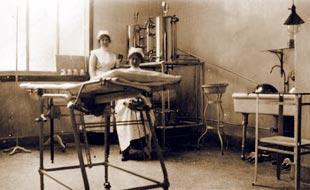
- Nellie Farr
- Isabel Jarvis
- Miss Baker
- Edith Bennett
- Myrtle Hallowell
- Isabel M. Hall
- Margaret Nicholson
- Georgia A. Lafferty
- Marianne Hill
- Alma Murphy
- Emma Bass
- Mrs. Robert Straw
- Stella Austin
- Alphonsine H. Hiller
- Madeline E. Plante
- Ronald Jacobus
- Evelyn Baker
- Madeline Plant (interim)
- Mrs. Savage
- Ann Wiggett
- Robert Kyle (interim)
- Richard C. McGinnis
- Lois Collins
- Isabella Garibaldi
- Linda Gilmore
- Koren Superchi

- Dr. William J. Beattie 1906
- J.F.M. Glessner 1913
- Fred English 1920
- Henry M. Eaton 1923
- H.A. Edson 1931
- Charles F. Bingham 1932
- Maurice J. Sullivan 1940
- Dr. Stephen L. Eaton 1944
- Trevor O. Mooney 1946
- George Noyes 1952
- Reginald Colby 1955
- F. Bingham Walsh 1956
- James Moulton 1958
- Mrs. Frances Mathey 1960
- Benton L. Moyer 1963
- Elton Bigelow 1965
- John E. Cyr 1967
- Arthur T. Simonda 1969
- Paul McGoldrick 1970
- Wayne Ruggles 1973
- Peter Smith 1975
- Wayne Golden 1977
- Kenneth Grout 1979
- Daniel Edgar 1981
- Carroll Campbell 1983
- Robert Copenhaver 1985
- William Bromage 1987
- Erline Jesseman 1989
- Aaron Cox 1991
- William Tucker, Jr. 1993
- Thomas Hepner 1995
- John Sauter, M.D. 1997
- Mark Russell, Esquire 1999
- Richard P. Gagne 2001
- George E. Brodeur, Sr. 2003
- Susan M. Presby 2005
- Edward Duffy, M.D. 2007
- 2009
- Guilbert Vickery 2011
- John Starr 2013
- Stevan Trooboff 2015
- William Bedor 2017
- Roger Gingue 2019




